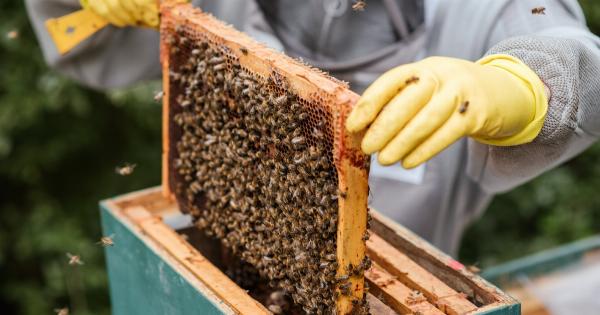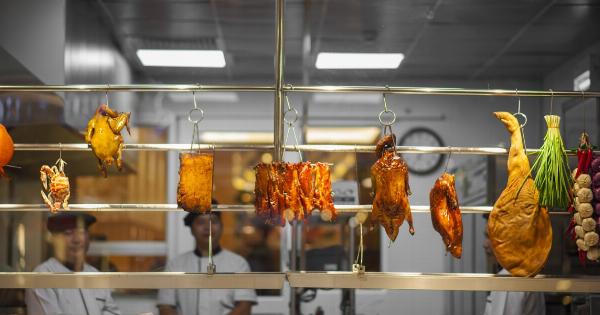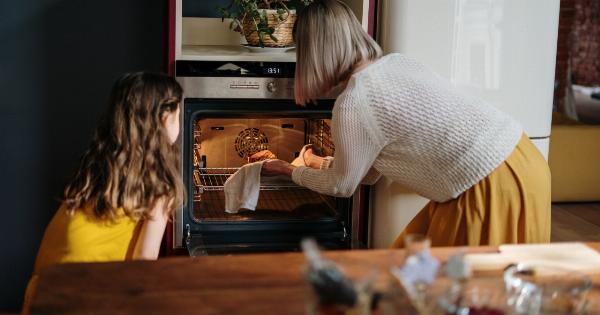Everyone loves going out to eat, but not everyone is aware of the germs that can lurk on surfaces, utensils, and even the food itself. Restaurants may seem like clean and tidy places, but there are plenty of hiding spots for germs to thrive.
In this article, we will explore some of the most common places where germs hide in a restaurant.
1. Restroom and Handwashing Stations
The restroom and handwashing stations are some of the most obvious places where germs can be found in a restaurant. People who do not wash their hands thoroughly or regularly can easily spread harmful bacteria and viruses that can cause illness.
Some common germs found in restrooms and handwashing stations include E. coli, Salmonella, and Norovirus. To avoid getting sick, it is crucial to wash your hands for at least 20 seconds with soap and warm water before eating or touching any food.
2. Menus and Tabletops
Believe it or not, menus and tabletops can be some of the dirtiest surfaces in a restaurant. These items are often touched by multiple people and may not be wiped down with disinfectant between each use.
A study conducted by the University of Arizona found that restaurant menus can have up to 185,000 bacteria per square centimeter! It is a good idea to wash your hands after touching menus or tabletops and to avoid placing your utensils or food directly on the table.
3. Utensils and Dishes
Another common place for germs to hide in a restaurant is on utensils and dishes. Even though they may appear clean, they may not have been washed thoroughly or sanitized correctly.
A study by the CDC found that nearly 50% of foodborne illness outbreaks in the United States are caused by contaminated utensils and dishes. If you are unsure if your utensils or dishes have been properly washed, ask for a new set or bring your own clean utensils from home.
4. Ice Machines
Ice machines may seem harmless, but they can be a breeding ground for harmful bacteria. The ice that is produced in these machines may not be properly filtered or stored, which can allow bacteria to grow.
A study conducted by the FDA found that nearly 70% of ice machines tested in the United States contained harmful bacteria such as E. coli and Salmonella. To avoid getting sick, it is best to avoid adding ice to your drinks or to ask for canned or bottled beverages instead.
5. Food Prep Areas
The food prep area is where restaurant staff prepare food, and it can be a prime spot for germs to hide. Raw meat, poultry, and seafood can cross-contaminate other foods and surfaces, potentially spreading harmful bacteria.
It is important for restaurant staff to follow strict food safety guidelines and to regularly clean and sanitize food prep surfaces to prevent the spread of germs.
6. Salad Bars and Buffets
Salad bars and buffets may seem like convenient options for a quick meal, but they can also be a source of germs.
The food at these stations may not be kept at the correct temperature to prevent bacterial growth, and utensils may not be cleaned or changed regularly, causing cross-contamination. It is best to avoid these types of food stations if possible and to always keep hot foods hot and cold foods cold.
7. Condiment Containers
Condiment containers such as ketchup bottles and salt and pepper shakers can also be a source of germs. These containers are touched by multiple people, and their surfaces may not be wiped down and sanitized between each use.
A study conducted by the University of Arizona found that restaurant condiment containers can have up to 114,000 bacteria per square centimeter! It is recommended to avoid using these containers or to bring your own condiments from home.
8. Cash Registers and Payment Devices
Cash registers and payment devices are also surfaces that can harbor germs. These items are touched by multiple people throughout the day and may not be cleaned and sanitized regularly.
A study conducted by Mastercard found that payment devices can have up to 79,000 bacteria per square inch. It is important to wash your hands after handling cash or payment devices and to avoid touching your face or mouth until you have washed your hands.
9. High Chairs and Booster Seats
High chairs and booster seats may seem harmless, but they can also be a source of germs. These items are used by multiple children and may not be cleaned and sanitized between each use.
A study conducted by the University of Arizona found that high chairs and booster seats can have up to 147,000 bacteria per square inch! It is a good idea to clean and sanitize these items yourself before using them or to bring your own portable high chair or booster seat.
10. Drinking Glasses
Drinking glasses may also be a source of germs in a restaurant. These items may not be properly washed or sanitized between each use, causing cross-contamination.
A study conducted by ABC News found that some restaurants use dirty rags or towels to dry drinking glasses, which can introduce harmful bacteria. It is best to inspect your glass before drinking from it and to ask for a new glass if you are unsure if it has been properly cleaned.
Conclusion
Germ contamination is a common problem in restaurants, and it is important to be aware of the areas where germs can hide.
By being mindful of the sources of germs and taking necessary precautions, such as washing your hands regularly and inspecting your food and utensils, you can reduce your risk of getting sick. Remember to always speak up if you have any concerns about the cleanliness of a restaurant, and report any illness to the appropriate authorities to help prevent the spread of germs.



























